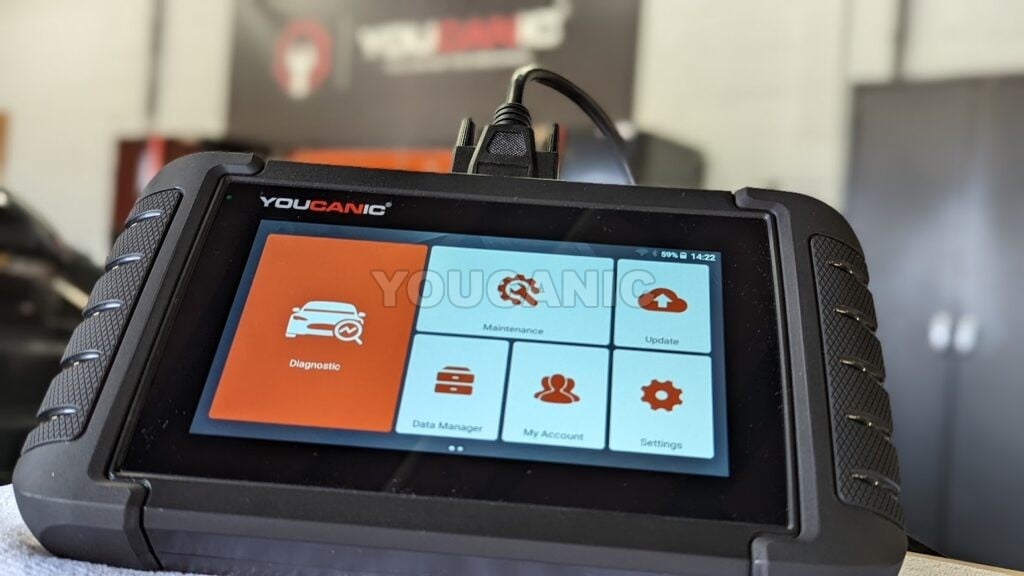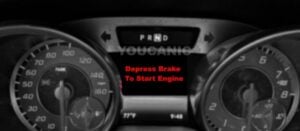How to Test Charging System
Need to test your vehicle’s charging system? Learn how to do it by following the procedures shown below. Using a battery tester, you can determine if the battery is good or needs to be replaced. We will show you how to perform a load test, which tells you if the alternator is providing the required voltage.
If your car won’t start or doesn’t stay running, one of the first troubleshooting steps is to check the battery and alternator. Checking the battery is very easy when you have the right tools.
What you will need
Tips for buying a car battery tester:
- Ideally, it should test the battery on the car directly without removing it.
- Can check 12 and 24-volt charging system
- Works on AGM, Lead-acid, flooded batteries, and GEL.
- Cold Cranking Amps Range: 200 – 1000 CCA
- Detects bad cells
- Can load and test an alternator
How to test a charging system

The YOUCANIC Battery Tester can test 6-volt and 12-volt batteries, AGM, GEL, or Lead-Acid Batteries, and charging systems at 12 and 24 volts. It is an excellent tool for quickly and easily performing a load test on car batteries. It also checks the charge status and determines if there are any problems with the charging system.
This is a great tool, even for mechanics. Its built-in Bluetooth chip allows you to send reports to any Bluetooth printer. However, you won’t likely use the print function unless you are an auto repair shop.
- Remove the key from the ignition. Locate the battery in your car.
- Connect the red clamp to the positive terminal on your car battery.
- Connect the black clamp to the negative terminal of your battery. The battery analyzer should turn on automatically and boot up. If you get an error message saying “Check Connection,” ensure the battery posts have no corrosion.
- Hit the MENU button, and you should see the Battery Test option. Press enter.
- Select the battery voltage. Most cars use a 12-volt system.
- Select Battery Location. In this case, we select In the vehicle. You can also test a battery that is not on the car by selecting “Out of vehicle.”
- Press enter and choose post type. In this case, we have Top Post.
- Next, select the battery type. You can choose a Regular Flooder (Lead Acid), AGM, or GEL battery.
- Enter Cold Cranking Amp CCA, which you can look up on your testing battery.
- Hit enter to get test results.
Possible test results.
| Good Battery | The battery is in good condition. |
| GOOD-RECHARGE | The battery is in good condition but has a low current. Fully charge the battery and return it to service—about 75% charge. |
| CHARGE & RETEST | Fully charge the battery and retest. Failing to fully charge the battery before testing may result in inaccurate results. If you still get a CHARGE & RETEST message after fully charging the battery, replace it—around 50% charge. |
| REPLACE BATTERY | The battery is almost dead, or the connection between the battery and the battery cable is poor. Replace the battery and retest, or disconnect the battery cables and retest it using the out-of-vehicle test before replacing it. |
| BAD CELL | The battery may be damaged by a broken cell or short circuit. Replace the battery and retest. |
How to perform a load test/cranking test
- Perform all instructions in Step 1 above.
- When the battery results are displayed, press Enter.
- Start the engine.
- Read the results of the cranking test.
Possible test results
| Cranking Normal | The starter voltage is standard, and the battery is fully charged. |
| Low Voltage | The starter voltage is low, and the battery is fully charged. |
| Charge Battery | The starter voltage is low, and the battery is discharged. Fully charge the battery and repeat the starter system test. |
| Replace Battery | The battery must be replaced before the starting system can be tested. |
| No Start | No vehicle start was detected. |
| Cranking Skipped | A start was not detected. |
How to test the charging system and alternator

- Perform instructions in Step 1 and Step 2.
- Once the results of the Cranking Test are displayed, press Enter.
- Rev up the engine as instructed.
- Turn on the lights and blower fan. If your car has LED lights, the tester may not detect that you turned them on. Try turning on the high beams or the rear defroster instead.
- Rev the engine while leaving the lights, blow, and defroster on.
- Determine the status of the charging system.
Possible test results
| No Problems | The alternator cannot power the system’s electrical loads and charges the battery. Check the belts to ensure the alternator is rotating while the engine is running. Replace broken or slipping belts and retest. Check the connections from the alternator to the battery; if the connection is loose or heavily corroded, clean or repair the cable and retest. |
| No Output | No alternator output was detected. Check all connections to and from the alternator, especially the connection to the battery; if the connection is loose or heavily corroded, clean or replace the cable and retest. If the belts and connections are in good working condition, replace the alternator. (Older vehicles use external voltage regulators, which may require only the replacement of the voltage regulator.) |
| Low Output | Alternator voltage output exceeds the normal limits. Ensure there are no loose connections and the ground connection is normal. If there are no connection problems, replace the regulator. Most alternators have a built-in regulator that requires replacing the alternator. In older vehicles that use external voltage regulators, you may need to replace only the voltage regulator. |
| High Output | Alternator voltage output exceeds the normal limits. Ensure there are no loose connections, and the ground connection is standard. If there are no connection problems, replace the regulator. Most alternators have a built-in regulator that requires replacing the alternator. In older vehicles that use external voltage regulators, you may need to replace only the voltage regulator. |
| Excessive Ripple | Excessive AC ripple detected. One or more diodes in the alternator are not functioning, or there is stator damage. |
Where to buy a Battery Analyzer
Check out these highly-rated Battery Analyzers online.
Conclusion
A good battery tester should be able to measure the battery’s voltage and the Cold Racking Amp (CCA), which is a better way to determine whether the battery is good.
Many cheap battery testers cannot perform a load or a charging system test.
Modern vehicles are sophisticated and very sensitive to battery malfunctions and voltage drops. Testing your car battery and charging system is critical, especially if experiencing unexplained electrical issues. You can save yourself a trip to the mechanic using a battery analyzer to determine whether the battery is good.







